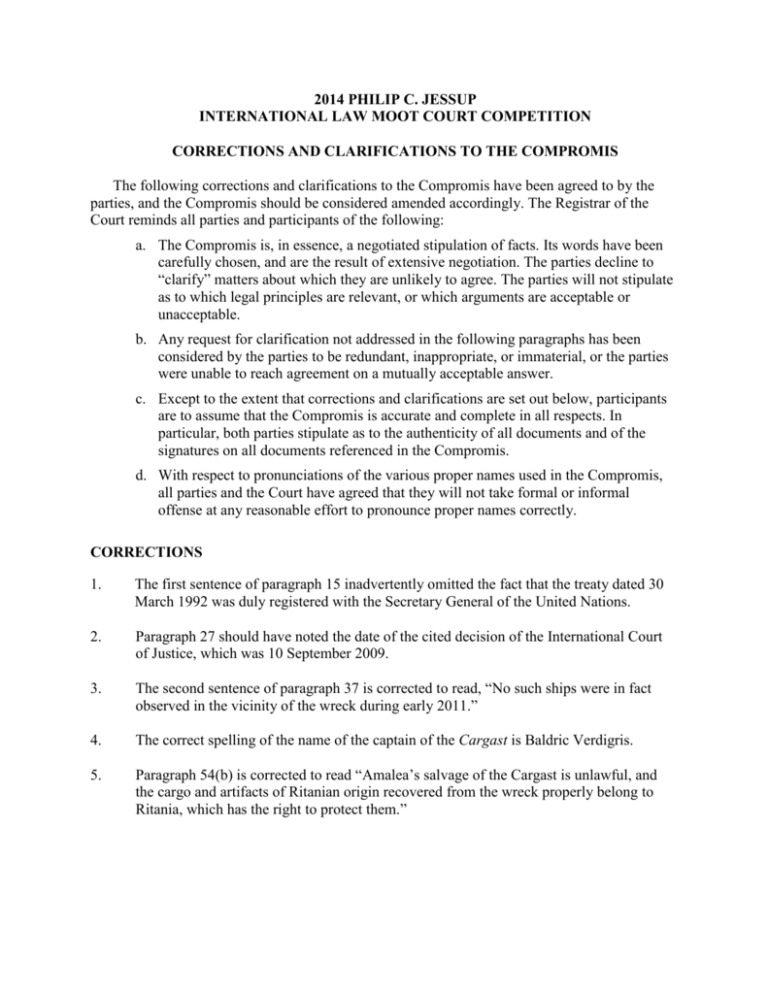How To Issue Corrections And Clarifications Effectively

Table of Contents
Identifying the Need for a Correction or Clarification
Before issuing a correction or clarification, you must first identify the need. This involves recognizing errors and assessing their impact.
Recognizing Errors
Identifying errors requires a keen eye for detail and a commitment to accuracy. Factual inaccuracies, misleading information, and unintentional misrepresentations all necessitate correction.
- Examples of errors needing correction: incorrect dates, misquoted sources, flawed statistics, inaccurate product descriptions, and misinterpreted research findings. Even seemingly minor inaccuracies can erode trust.
- The importance of a thorough review process: Implementing a robust review process before publication is paramount. Multiple sets of eyes checking for errors, including fact-checking and proofreading, can significantly reduce mistakes. This proactive approach is far more effective than reactive damage control.
- The difference between a minor clarification and a significant correction: A minor clarification might address a slight ambiguity or provide additional context. A significant correction, however, addresses a substantial factual inaccuracy that requires a formal retraction or amendment. The severity dictates the approach.
Assessing the Impact
Once an error is identified, assess its potential harm and the urgency of issuing a correction.
- Consider the audience affected: Who was exposed to the inaccurate information? A larger audience necessitates a broader dissemination of the correction.
- Evaluate the potential legal ramifications: In some cases, inaccurate information can have legal consequences. Consult legal counsel if necessary.
- Determine the scale of the correction needed: Will a simple website update suffice, or is a formal press release or public statement required? The scale should match the severity of the error.
Crafting Effective Corrections and Clarifications
Creating effective corrections and clarifications requires careful wording and strategic dissemination.
Writing Clear and Concise Statements
Use simple, direct language, avoiding jargon and technical terms. Clarity is key.
- State the error clearly and concisely: Don't beat around the bush. Directly address the inaccurate information.
- Provide the accurate information: Replace the inaccurate information with the correct facts and figures.
- Avoid defensiveness or blaming others: Accept responsibility for the error. Blaming others only exacerbates the situation.
- Maintain a professional and respectful tone: Even when addressing a serious mistake, maintain a calm and professional demeanor.
Choosing the Right Channels
Select communication channels appropriate for the audience and the severity of the error.
- Selecting the right channel based on the audience and the severity of the error: A minor clarification might be handled via a website update, while a significant correction might require a press release and social media announcements.
- Using multiple channels for widespread dissemination, if necessary: Ensure the correction reaches everyone exposed to the original inaccurate information.
- Prioritizing transparency and accessibility: Make the correction easily accessible and readily visible. Don't bury it deep within your website.
Managing the Fallout After Issuing a Correction
After issuing a correction, actively monitor feedback and address concerns.
Monitoring Feedback and Addressing Concerns
Actively monitor responses to the correction. Be prepared to address any lingering questions or concerns.
- Engage in constructive dialogue: Respond to comments and questions in a timely and professional manner.
- Show empathy and understanding: Acknowledge the frustration or concern caused by the initial error.
- Avoid getting into arguments or further disputes: Focus on providing accurate information and resolving the issue.
Preventing Future Errors
Implement strategies to prevent similar errors from occurring in the future.
- Improving fact-checking processes: Strengthen your fact-checking procedures. Utilize multiple sources and cross-reference information.
- Strengthening internal review procedures: Implement more robust internal review processes to catch errors before publication.
- Providing additional training to staff: Invest in training to improve staff knowledge and awareness of accuracy and best practices.
Conclusion
Issuing corrections and clarifications effectively is a vital skill for maintaining credibility and building trust with your audience. By following the steps outlined above – identifying errors, crafting clear statements, selecting appropriate channels, and managing feedback – you can minimize the negative impact of mistakes and strengthen your reputation. Remember, a well-handled correction demonstrates responsibility and transparency, ultimately benefiting your organization's overall image. Mastering the art of issuing corrections and clarifications will help protect your brand and foster stronger relationships with stakeholders. Don't hesitate to implement these strategies to improve your approach to issuing corrections and clarifications.

Featured Posts
-
 The X Files Gillian Anderson And Chris Carter Discuss A Coogler Reboot
Apr 30, 2025
The X Files Gillian Anderson And Chris Carter Discuss A Coogler Reboot
Apr 30, 2025 -
 Vaticano Rinvio Udienza Processo 8xmille Coinvolto Fratello Becciu
Apr 30, 2025
Vaticano Rinvio Udienza Processo 8xmille Coinvolto Fratello Becciu
Apr 30, 2025 -
 Information Financiere Edenred Document Amf Cp 2025 E1029244
Apr 30, 2025
Information Financiere Edenred Document Amf Cp 2025 E1029244
Apr 30, 2025 -
 Yate Recycling Centre Incident Air Ambulance Called
Apr 30, 2025
Yate Recycling Centre Incident Air Ambulance Called
Apr 30, 2025 -
 Three Injured In Yate House Explosion Gas Leak Suspected
Apr 30, 2025
Three Injured In Yate House Explosion Gas Leak Suspected
Apr 30, 2025
